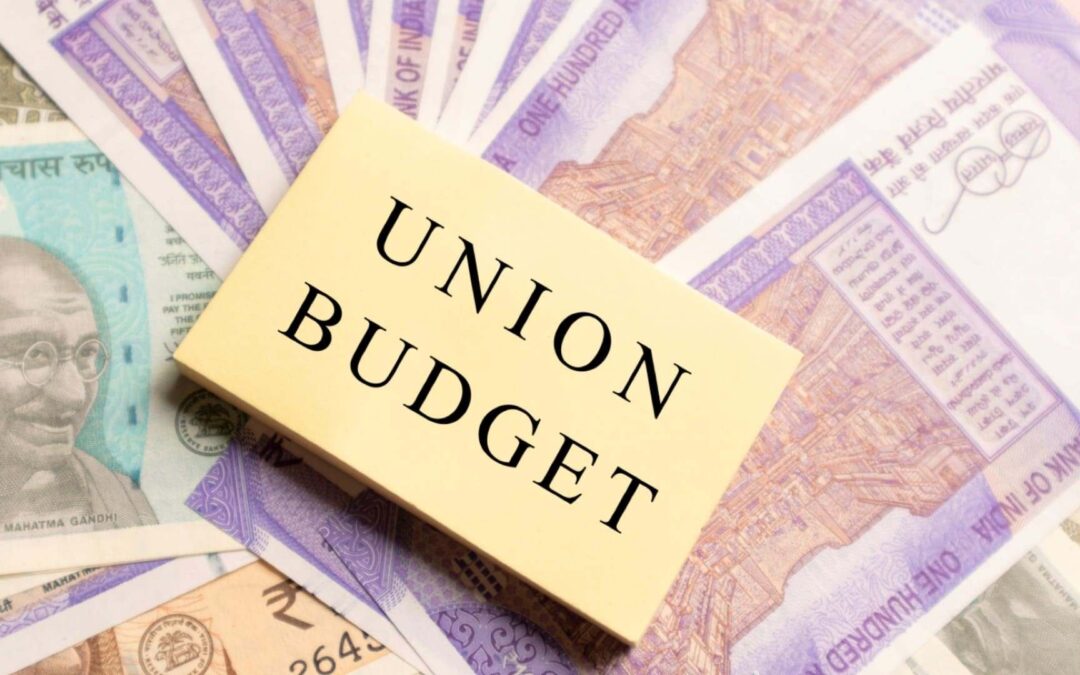
by Sathvik Nagraj | Mar 3, 2023 | Savings
Many people struggle to reach their financial goals due to lack of budgeting. Budgeting is a critical part of financial planning that can help you achieve your short-term and long-term money goals. Hence, it becomes absolutely necessary to create a budget to manage your money better.
In this article, we will discuss the steps to create a budget as well as how to make a plan that you can stick with over time. By following these steps closely and consistently monitoring your progress, you can put yourself in the best position possible for success in managing your finances.
If you are wondering the importance of the union budget, then check out our article here.
How to Create a budget?
Creating a budget is one of the biggest steps in the main components of personal finance. Here are the brief steps to creating the perfect budget to suit your finances:
Step 1: Identifying Goals
Start by identifying your goals and determining how much money you need to save or spend to reach them.
Identify your income sources, calculate your after-tax income, and estimate your monthly expenses such as rent, utilities, groceries, entertainment and transportation costs.
Step 2: Creating a strategy
Create a budgeting strategy that will help you stay in spending control.
Divide your spending into two categories: needs and wants, and track your expenses to ensure you are meeting the budget goal you have set.
Step 3: Setting goals
Set realistic goals that you can stick with over time.
This may include setting a goal to save 10 percent of your income each month or reducing your discretionary spending by 20 percent per month.
Step 4: Make Adjustments
Make adjustments to your budget as needed and keep track of your progress.
Make sure you are consistently monitoring how close you are to reaching your goals and adjust accordingly when necessary.
Step 5: Consistency
Stay motivated by surrounding yourself with people who share the same financial goals, reading personal finance books and using online resources for support.
Staying on Track and Being Consistent
After creating a budget, most people find it difficult to stay on track and be consistent in managing the budget and their finances. This is often the most important aspect of saving money We have provided you with strategies to help you.
Set Clear Goals
Establish clear, realistic goals that you feel you can realistically reach.
Think about the long-term goals you have and how much money you need to save or spend in order to reach them.
Track Your Spending
As you go through each month, keep a close eye on your expenses and compare them to the budget that you’ve outlined.
If needed, don’t be afraid to make changes in order to remain within your allotted funds!
Create Categories
Create distinct categories for the areas that you spend and save your money, then track those expenses accordingly.
This will help maintain a sound budgeting plan while allowing you an improved view of where your money is going.
Stay Accountable
Find ways to stay accountable to yourself, whether it’s using online resources or having a financial planner as a mentor.
Having people who understand the importance of budgeting can help you stay on track and reach your goals.
Why is it Important to Track your Progress?
Tracking progress is one of the most important steps when it comes to budgeting.
- Tracking your progress can help you stay on track and give you an idea of how close you are to reach your financial goals.
- Knowing where your money is going each month can also be used as a tool to identify areas that may need additional attention or adjustment.
- With consistent monitoring and a clear plan, you can increase your chances of successfully reaching your financial goals.
Conclusion
Creating and following a budget plan is an essential step to reach your financial goals. With the right strategy, you can set clear and realistic goals, track your progress and make adjustments when necessary.
By staying motivated, setting categories for spending and saving, tracking expenses consistently and staying accountable to yourself or others, you will be in the best position possible for success in managing your finances.
Developing a budget plan may seem intimidating at first but with some practice it can become second nature – resulting in increased savings over time!
So take those steps today towards achieving your money dreams by creating a budget that works for you.

by Sathvik Nagraj | Mar 3, 2023 | Investment
Money market instruments in India are an important source of short-term funding for businesses, investors and governments. They provide a variety of options to meet the needs of different entities. These money markets offer both low-risk investments and high returns with varying degrees of liquidity.
This article will discuss money market instruments in India, including types of money markets and their advantages and disadvantages. We will look at examples of money market investments & how they can be used to manage liquidity.
We’ll also look into the regulatory framework that governs money markets in India so as to provide an overview on money market instruments in India.
Types of Money Market instruments in India
Here are the various money market investments available in India
Repos
Repo, or repurchase agreement, is a money market instrument in which one party agrees to sell a security to another party at a specific price that is agreed upon with a commitment to buy it back at a later date at an agreed-upon price.
This money market instrument is usually used by banks and financial institutions for short-term liquidity management.
Commercial Paper
It is an unsecured money market instrument used in India by corporate bodies to meet short-term borrowing needs.
The money raised through this money market instrument is often used for working capital requirements. Some examples include inventory purchases, payment of salaries and dividends etc.
Treasury Bills
This money market instrument is issued by the Central Bank of India (RBI) on behalf of the Government.
Treasury Bills are short-term government securities with maturities ranging from 91 days to 364 days.
They are considered to be one of the safest money market instruments as they are backed by the full faith and credit of the Indian Government.
Certificate of Deposits
Certificates of Deposit (CDs) are money market instruments issued by banks and financial institutions, often to small and medium-sized enterprises (SMEs).
CDs are a type of money market instrument that pays a higher interest rate than regular savings accounts. But, it requires the depositor to keep their money in the account for a fixed period of time.
Mutual Funds
Mutual funds are money market instruments that pool money from investors and use it to purchase securities. These securities may include stocks, bonds or other investments.
Check out our article on how to choose the best mutual funds here.
They provide investors with diversified investment options in money markets and offer higher returns than other money markets instruments.
How can Money Markets be used to Manage Liquidity?
Usually, money market instruments or short term investments are subject to easier liquidity. Here are some ways they can be used to manage liquidity.
Access to short term loans
Money markets can be used by businesses and investors to manage liquidity and gain access to short-term borrowing.
Money market instruments include short-term debt securities, money market mutual funds, certificate of deposits (CDs), repurchase agreements (repos), commercial papers and treasury bills.
These money markets offer low risk investments with varying degrees of liquidity.
Access to short term money
Money market instruments can be used to manage liquidity by providing businesses and investors access to short-term money.
Money markets offer a range of money market instruments with varying maturities, interest rates and levels of risk, allowing businesses. Investors to choose a money market instrument that best suits their needs.
Lower costs
In addition, money market instruments provide businesses and investors access to short-term money at a lower cost than other forms of borrowing.
This is because money market instruments are often backed by governments or collateral. This reduces the risk of default for banks and financial institutions that offer such money market instruments.
Cash flow managements
Furthermore, money markets can be used to manage liquidity by allowing businesses and investors to effectively manage their cash flows.
By putting money in money markets, investors are able to earn a return on their money while still having access to it when needed.
Hedge against interest rates
Finally, money markets provide an effective way for businesses and investors to hedge against rising interest rates by allowing them to lock in fixed returns with money market instruments.
Money market instruments offer predictable returns which can help investors and businesses manage their money in the short-term.
Regulation of Money Market Instruments
In India, money markets are looked after by the Reserve Bank of India (RBI) and the Securities and Exchange Board of India (SEBI).
The money market instruments are governed by the RBI through a number of measures.
RBI
First, money markets are tracked under the RBI guidelines on money market operations in India.
These rules specify the money market instruments that can be used in money markets, the interest rates applicable to money market instruments and the maturity period of money market instruments.
SEBI
Second, money markets are regulated by SEBI under SEBI (Mutual Funds) Regulations, 1996, which specify the requirements for money market mutual funds.
These regulations specify the types of money market mutual funds, the risk related to money market mutual funds, the redemption and tax rules applicable to money market mutual funds.
Securities Contracts Act, 1956
Third, money markets are regulated by SEBI through the Securities Contracts (Regulation) Act of 1956.
It states that the money market instruments that can be used in money markets and also sets out the blueprint for stock exchanges to act as intermediaries in money markets.
Companies act, 1956
Finally, money markets are regulated through the Companies Act of 1956 which defines money market instruments and sets out rules for money market investments.
This act also provides guidance on the legal structure of money market instruments and how money market transactions should be carried out.
Conclusion
Money market instruments offer a wide range of money market instruments with varying maturities, interest rates and levels of risk that allow businesses to access short-term money at lower costs.
These investments can be used for cash flow monitoring, as well as combating rising interest rates. In India, the RBI and SEBI provide regulatory measures on money markets under various laws such as the Securities Contracts (Regulation) Act 1956, Companies Act 1956 and Mutual Funds Regulations 1996.
With these regulations in place, investors have greater assurance when investing in money market instruments in India.

by Sathvik Nagraj | Mar 3, 2023 | Culture & Money
Investing in the stock market can be a great way to grow your wealth and financial portfolio. But it’s important to understand the regulation of the Indian stock market before taking any risks. The Indian stock market market is regulated by the Securities and Exchange Board of India (SEBI) primarily.
The body plays a key role in verifying fair practices, protecting investors’ funds, promoting orderly development, and encouraging self-regulation among brokers and other middlemen.
In this article we will discuss SEBI’s role in regulating the Indian Stock Market, along with its responsibilities and powers for doing so. We’ll also look at some of the steps taken by SEBI to ensure safety of investors’ funds as well as potential challenges faced when it comes to regulation.
Check out our article on how to choose mutual funds while considering SEBI’s regulations here.
Role of SEBI in regulating the stock market
The role of the Securities and Exchange Board of India (SEBI) in regulating the Indian Stock Market is of paramount importance.
- SEBI is a regulatory body established in India in 1992. It was created to protect the interests of investors and promote the orderly development of the stock market.
- One of the key roles played by SEBI is the regulation and supervision of the Indian stock market. This includes regulation of securities markets, brokers, merchant bankers, mutual funds and other intermediaries.
- SEBI is responsible for ensuring fair practices in the stock market, preventing manipulation and fraud, maintaining transparency in the market and providing safeguards to protect investors.
- Furthermore, SEBI has the power to impose regulations on intermediaries such as brokers, mutual funds and depositories.
- It also has the authority to take action against any person or institution who violates its rules and regulations.
How does it Ensure the Safety of the Investor?
The role of SEBI in Indian personal finance is of utmost importance to the common man. It ensures safety to the common man in the following ways:
Capital Adequacy Requirements
SEBI has implemented capital adequacy requirements for stock brokers and sub-brokers. This must be met to be eligible to conduct activities in the Indian stock market.
This is done to ensure that there are sufficient funds available to cover the potential losses of investors.
Investor Protection Fund
SEBI has established an Investor Protection Fund (IPF) to provide compensation to investors in case of any fraud or manipulation by the broker or intermediary.
The fund is funded by levying a small fee on each transaction in the stock market.
Disclosure Requirements
SEBI has imposed disclosure requirements on all market intermediaries to ensure transparency in the stock market.
These include periodic disclosures of financial statements, corporate governance reports and other financial details related to the company’s operations.
Self-regulation measures
SEBI also encourages self-regulation among brokers, mutual funds, and other intermediaries.
This includes the formation of associations such as the Association of Mutual Funds in India (AMFI) and the National Stock Exchange of India (NSE).
The Challenges Faced by SEBI in the Regulation of the Stock Market
Challenges Faced by SEBI in regulation of the stock market include:
- Lack of resources to effectively monitor the activities in Indian Stock Market.
- Difficulty in enforcing regulation due to lack of effective enforcement powers.
- Varying regulations among different states, making it difficult for uniform regulation across the country.
- Compliance costs which are associated with regulation is often passed on to investors.
- Limited technical expertise needed for monitoring and regulating digital systems used in trading financial instruments electronically.
Conclusion
The Indian Stock market is regulated by SEBI and is essential to ensure that investors’ funds are safe and secure.
As such, it has implemented capital adequacy requirements for stock brokers and sub-brokers, established an Investor Protection Fund (IPF) to provide compensation in case of fraud or manipulation, imposed disclosure requirements on market intermediaries and encouraged self-regulation among brokers and other intermediaries.
Despite these measures, there are still challenges faced when it comes to regulation due to a lack of resources and enforcement powers as well as varying regulations across different states.
Nevertheless, with its oversight role over the stock markets in India, SEBI continues to be a key player in ensuring fair practices in the securities market while protecting investor interests.

by Sathvik Nagraj | Mar 3, 2023 | Culture & Money
Budget surplus and deficit are two key concepts in public finance that can have a major impact on government policy. Budget surplus occurs when total income exceeds total expenditure, while budget deficit is the opposite – when expenditure exceeds income.
These terms may seem simple enough, but they have significant consequences for public policy. They also provide opportunities for governments to use fiscal policies to address imbalances between the two.
Let us explore what these terms mean, how they are related, their implications for public policy and potential benefits of a budget surplus versus a budget deficit.
We will also discuss ways governments can use fiscal policies to address deficits or surpluses in the past and offer some concluding thoughts on using such policies effectively.
The Relationship between a Surplus and a Deficit
The relationship between budget surplus and deficit is a complex one, but it is necessary for understanding public finance.
Budget Surplus
- A budget surplus means that total income exceeds total expenditure and represents an excess of revenue over expenses.
- A budget surplus is also helpful to governments in other ways.
- It can be used to increase savings, which can then be invested in infrastructure projects, government services, or new businesses.
- Additionally, surpluses can help reduce government borrowing costs and create a more stable economic environment.
Budget Deficit
- Conversely, a budget deficit occurs when total expenditure exceeds income.
- A budget deficit signals an unhealthy economy. It suggests that the government is spending more than it is receiving in revenue.
- This can lead to an increase in public debt and other negative economic outcomes.
- Both scenarios can have significant implications for public policy. It can determine how government money is spent and where resources are assigned.
- The size of the budget surplus or deficit can also have a significant impact on economic growth and inflation, as well as government debt levels.
Implications of Surplus and Deficit
The implications of budget surplus and deficit for public policy depend largely on the type of government in place. Also check out our article on the importance of the union budget here.
- In democratic societies, deficits can be used to fund social programs and trigger economic growth. On the other hand, budget surpluses can help keep inflation in check and lead to lower interest rates. They can also be used to reduce the public debt or pay down government loans.
- The implications of budget surplus and deficit for public policy can have far-reaching consequences.
- For instance, a budget surplus may allow the government to invest in more infrastructure projects or reduce public debt. This could result in increased economic growth and employment opportunities for citizens.
- Alternatively, a budget deficit could lead to an increase in government borrowing costs and higher levels of public debt, which could be extremely dangerous to the economy in the long run.
Policies to Regulate Imbalances in Finances
Fiscal policy is a key tool for governments to address budget imbalances and address any short- or long-term economic issues.
Generally, fiscal policy involves the use of government spending, taxation, and borrowing to influence economic activity.
Governments may increase or decrease spending and taxation in order to expand or contract economic activity, respectively.
- For instance, if a government is running a budget deficit, it may try to reduce its spending and/or increase taxation in order to bring the budget back into balance. Similarly, if the government is running a budget surplus, it may use fiscal policy to stimulate economic activity by increasing spending and/or reducing taxes.
- Another example of how governments have used fiscal policy to address deficits is through austerity measures. This includes cutting government spending, raising taxes, or a combination of the two. In 2011, in response to the financial crisis, Greece executed an austerity package that included significant cuts to government spending and increases in taxes on items such as energy and alcohol. By doing so, they were able to reduce their budget deficit and bring the country back into balance.
Conclusion
Overall, budget surpluses and deficits can have massive implications for public policy. Governments must use fiscal policies to effectively address any imbalances in their budgets, as it has the potential to influence economic activity and government debt levels.
Whether a government is running a surplus or deficit, they should take into consideration how their decisions will affect citizens’ lives before implementing any changes.
With careful planning and smart decision making, governments can ensure that their budget deficits or surpluses are managed appropriately and efficiently.

by Sathvik Nagraj | Mar 2, 2023 | Investment
Every year when the Union Budget rolls out, do you ever wonder how is union budget prepared in India?
The Union Budget of India is a complex and important process. It has significant implications for the country’s economic development and fiscal policies.
Every year, important steps in budget preparation are undertaken to ensure the successful implementation of the budget plan. This article will provide an overview of how India’s Union Budget is prepared each year from start to finish.
Also read about budget surplus’ and deficits in our article here.
Steps Involved in Budget Preparation in India
The Union Budget of India is a complex and important process. It has significant implications for the country’s economic development and fiscal policies.
Planning
The first step in budget preparation is planning.
This involves setting objectives and determining how these will be achieved within the given timeframe of the fiscal year.
Prioritising objectives is important for the successful implementation of a budget plan.
Forecasting and Resource Allocation
Once objectives are established, steps such as forecasting and resource allocation must be completed in order to account for both anticipated and unexpected expenses.
Risk management
Finally, risk management steps such as contingency planning should be considered. This will minimize potential challenges or pitfalls during the budget preparation process.
Execution
Once the budget plan is prepared, it must be implemented and monitored for effectiveness.
This includes tracking progress of budget objectives, assessing the impact of fiscal policies on economic development and adjusting the plan as necessary in order to achieve desired results.
Challenges such as political interference, resource scarcity and inadequate data collection may arise during the process of preparing a union budget in India. Therefore, steps must be taken to ensure that these challenges are addressed and managed effectively.
Conclusion
India’s Union Budget is an important and complex process with significant implications for the country’s economic development and fiscal policies. Every year, steps such as planning, forecasting and resource allocation must be taken in order to ensure a successful budget plan.
Additionally, risk management steps should be considered to minimize potential challenges or pitfalls during the preparation of India’s Union Budget. With proper steps in place from beginning to end, you can create a comprehensive budget. This will mostly meet your objectives while accounting for both anticipated and unexpected expenses.
By learning how is union budget in India prepared, we can know more about budgets, how the country is run and how money flows in the country. We can also learn how to budget our own personal expenses as well!





